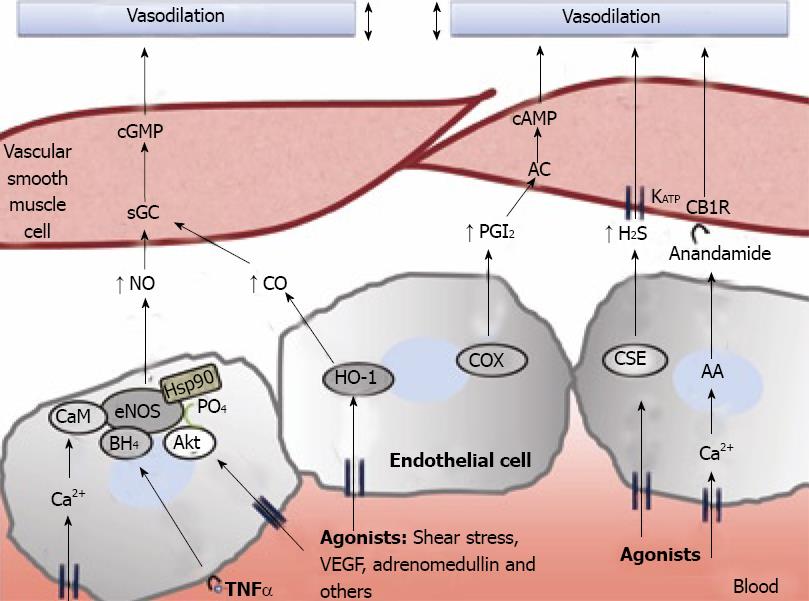Copyright
©2010 Baishideng.
World J Hepatol. Jun 27, 2010; 2(6): 208-220
Published online Jun 27, 2010. doi: 10.4254/wjh.v2.i6.208
Published online Jun 27, 2010. doi: 10.4254/wjh.v2.i6.208
Figure 2 Molecular pathways associated to splanchnic vasodilation.
Vasoactive molecules involved in the regulation of vascular tone in the arteries of the splanchnic circulation. Nitric oxide (NO), carbon monoxide (CO), prostacyclin (PGl2) or hydrogen sulfide (H2S), generated through different pathways in endothelial cells, cause vasodilation in vascular smooth muscle cells by either activating soluble guanylate cyclase (sGC) to generate cyclic guanosine monophosphate (cGMP), by stimulating adenylate cyclase (AC) and generation of cyclic adenosine monophosphate (cAMP) or through the opening of KATP channels. Also, anandamide activates endothelial cannabinoid 1 receptors (CB1R) provoking vasodilation. AA: arachidonic acid; AC: adenylyl cyclase; Akt: protein kinase B; BH4: tetrahydrobiopterin; CaM: calmodulin; CSE: cystathionine-γ-lyase; COX: cyclooxygenase; eNOS: endothelial nitric oxide synthase; HSP90: heat shock protein 90; IP3: inositol triphosphate; TNFα: tumor necrosis factor α; VEGF: vascular endothelial growth factor.
- Citation: Martell M, Coll M, Ezkurdia N, Raurell I, Genescà J. Physiopathology of splanchnic vasodilation in portal hypertension. World J Hepatol 2010; 2(6): 208-220
- URL: https://www.wjgnet.com/1948-5182/full/v2/i6/208.htm
- DOI: https://dx.doi.org/10.4254/wjh.v2.i6.208









